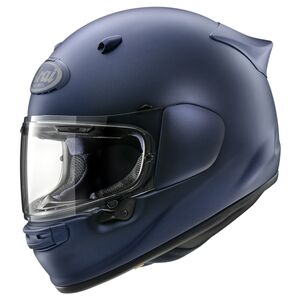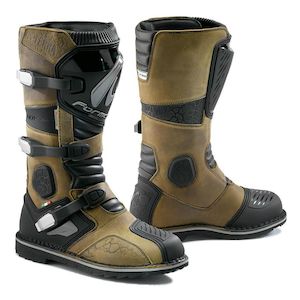What if you want a motorcycle that’s great around town, fast down a twisty road, has loads of off-road capability, and isn’t a big ugly ADV?
Scratching your head? We all were, until Triumph launched the Scrambler 1200 back in 2019. It’s a handsome machine that absolutely rips off-road. Zack and I used a ‘19 XE to retrieve Christmas trees for an episode of CTXP, and last year I rode a ‘23 XE at the GOAF in Mojave. That seat time cemented the big, up-spec Scrambler as a favorite. I mean, when a bike looks that good and can run toe-to-toe with a KTM 890 Adventure and R 1250 GS in the dirt, how could you not love it?
As in years past, Triumph is offering the Scrambler 1200 in two trim levels for 2024, the X (which replaces the XC) and the XE. Previously (and despite Spurgeon’s insistence to the contrary) the primary distinction between models was suspension length and thus seat height. This time, Triumph has enacted changes that more clearly differentiate the bikes, in terms of end use and price.
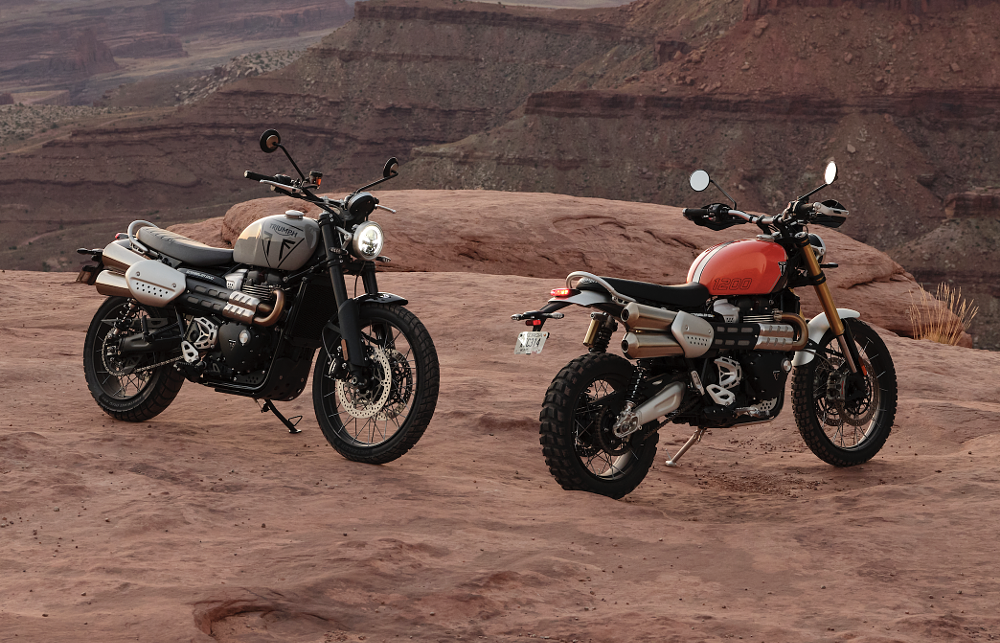
I won’t keep you waiting on the latter since we’ve all been slapped around by inflation so much recently: The new XE is $15,295 (compared to last year’s $16,195) and the X is $13,595 (instead of the XC’s $14,745). Price reductions like that, in this economy?!
“X” marks the spot
Before we discuss the differences between the X and XE, let’s talk about the fundamentals that these stablemates share. The 1,200 cc “High Torque” parallel twin and its stated 81 foot-pounds of torque and 89 horsepower are the same, though both figures arrive a few hundred rpm earlier now. The motor has a larger 50 mm throttle body (up from 45 mm) plus a revised intake and modified exhaust intended to add top-end power and subtract heat that has historically roasted the rider’s right leg. Weights, now listed as wet instead of dry, are just north of 500 pounds.
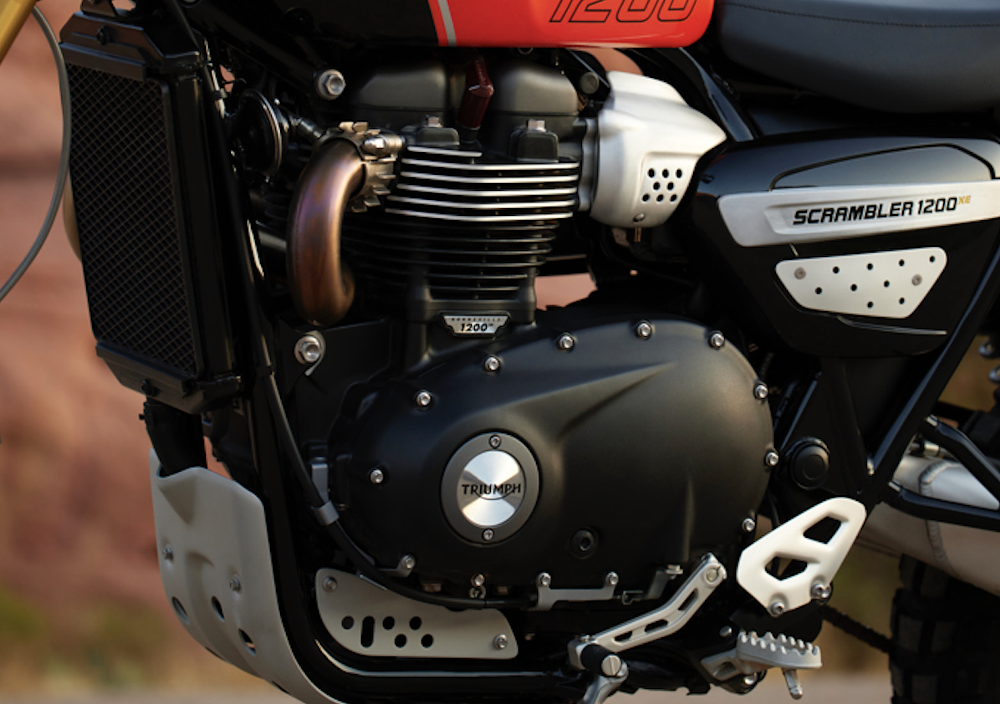
The X and XE also share new IMU-informed traction control and ABS, meaning lean angle is taken into account when deciding how much slip is acceptable. Suspension components are also new this year, hailing from Marzocchi in Italy rather than Öhlins in Sweden (for the shocks) and Showa in Japan (for the fork). And here’s where the differences start, which, for the X anyway, are mostly a story of reduction.
Since the beginning the more street-oriented model had the same fully adjustable suspension as the XE, just with less stroke. For ‘24 the fork is non adjustable, and the shock only offers spring preload. The suspension has even less stroke now, 6.7 inches instead of 7.9, to help lower the seat to a new 32.3-inch height. Triumph also swapped out the X’s brake calipers, replacing the radial-mount four-piston Brembos with axially mounted two-piston Nissins that squeeze smaller, 310 mm discs. The X also loses cruise control, has a simpler dash pulled from the Trident, and has fewer ride modes that offer fewer (and non sticky!) features. No wonder it's less expensive.
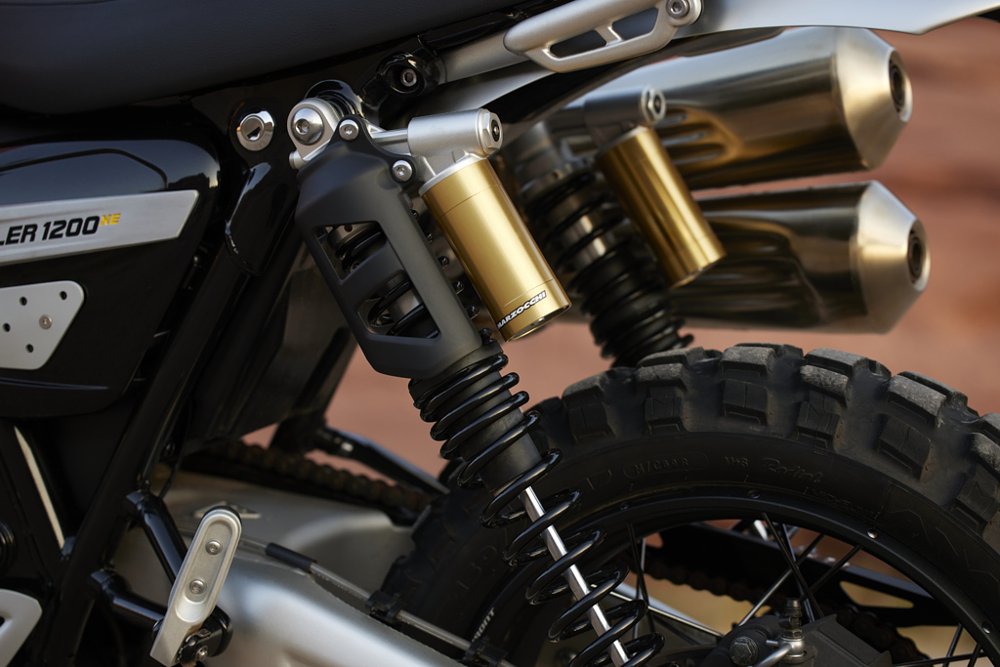
The idea of the X is to offer a more accessible and affordable Scrambler for folks who want the look but don’t necessarily demand the hardcore off-road capability (or just don’t have the inseam for a 34.3-inch seat height). I get it, and that makes sense. But for the XE, the change to Marzocchi, along with the $900 price reduction, had me worried. How often do things get cheaper and remain as good? Amazing suspension is a big reason the XE kicked ass, so rolling into this press launch my biggest question was whether the XE could still walk the walk.
Cold scrambled
Triumph staged the 1200s’ intro in the Anza-Borrego Desert in California, an area renowned for its epic off-roading and pleasant winter weather. However, for day one we were sticking to pavement on the X, and the weather was anything but pleasant.
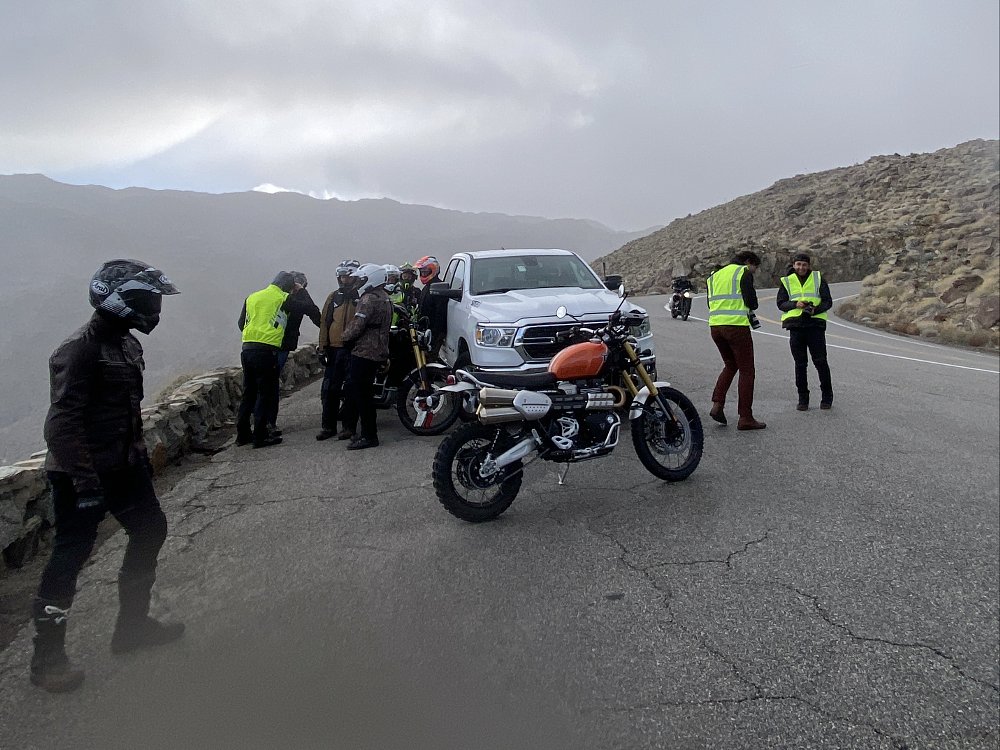
As we climbed up and out of the desert town of Borrego Springs we rose into a frigid rain storm. The X doesn’t have the XE’s handguards and heated grips (on the XE) moved from being a standard feature to an accessory back in 2022, so my fingers went numb almost immediately. The bikes’ stock Michelin Karoo Street tires had also been swapped for dirt-focused Anakees in preparation for day two’s off-road excursion, and the tall knobs weren’t doing us any favors on the cold, wet, steep pavement.
It wasn’t ideal riding weather, but it did provide a great opportunity to get familiar with the new cornering feature baked into the ABS and TC. In Rain mode the TC doesn’t just react to wheelspin, it actually works to prevent it by limiting torque when you’re leaned over. So even though I’d opened the throttle, say, 20 percent coming off a corner, the TC didn’t dole out the corresponding power until I stood the bike up. And even then, coping with copious power and a traction deficit, TC intervention was smooth and consistent. You don’t always need an ultra-cautious ride mode, but I was certainly grateful for its vigilance as we tiptoed down winding roads that would have been a real treat on a nicer day.
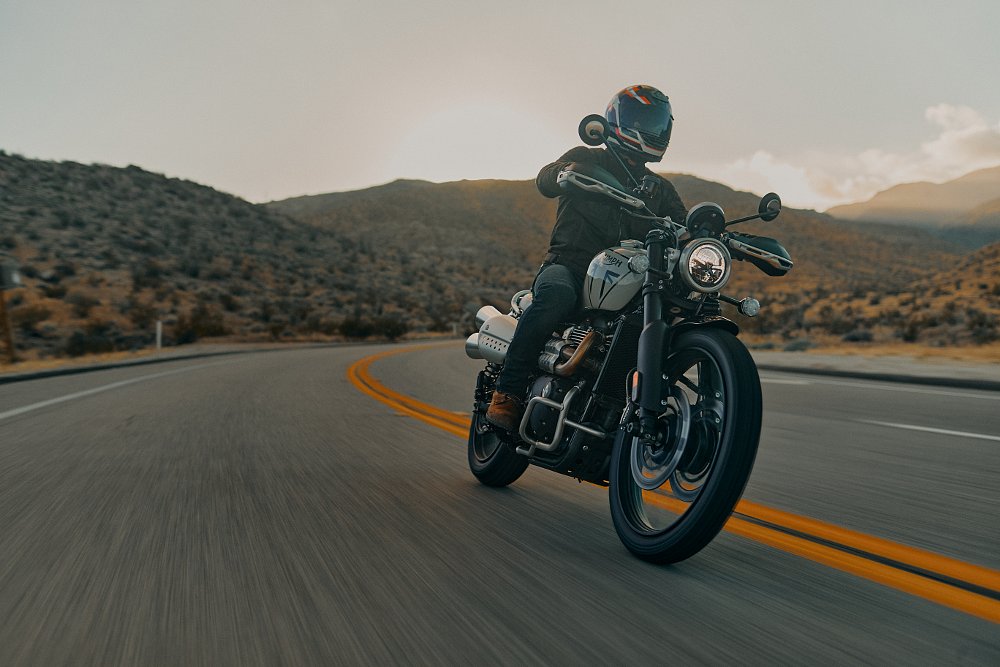
Day two was what everyone expects of the Southern California desert in the winter: sunny and 70 degrees by 10 a.m. The Triumph team did a great job improvising a new schedule that integrated more (dry!) pavement and plenty of bike swaps, so I was able to experience the X and XE back-to-back and on the road and in the dirt.
No surprise, seat height is the most immediately noticeable difference on the street. The X’s 32.3-inch perch let me rest both feet flat on the ground with a bend in my knees, whereas I was on the balls of my feet on the XE. For reference, I’m five feet, 11 inches tall. The X also feels more compact due to its narrower, lower handlebar.
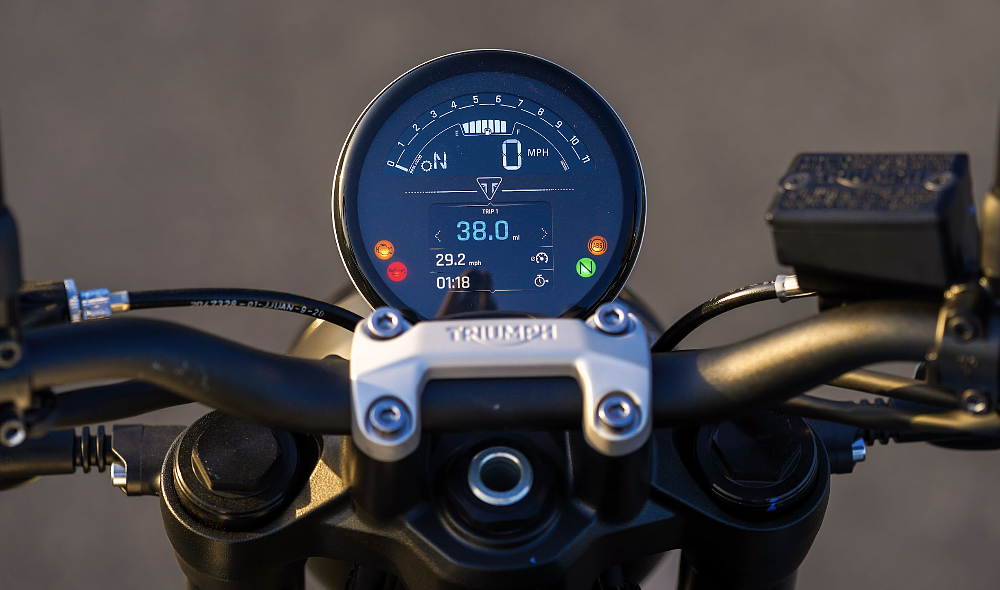
Suspension wise, the X was fairly taut and transmitted more of the road surface to the rider. The XE, on the other hand, was touring-bike plush. Both bikes handle well, though steering and stability was muddied by the Anakee’s knobs. If you're after pavement superiority and retro style, check out the Speed Twin. Straight line, maximum-force braking on the X didn’t reveal any deficits in the new, lower-tier hardware. The lever was firm, with good feedback and plenty of stopping power.
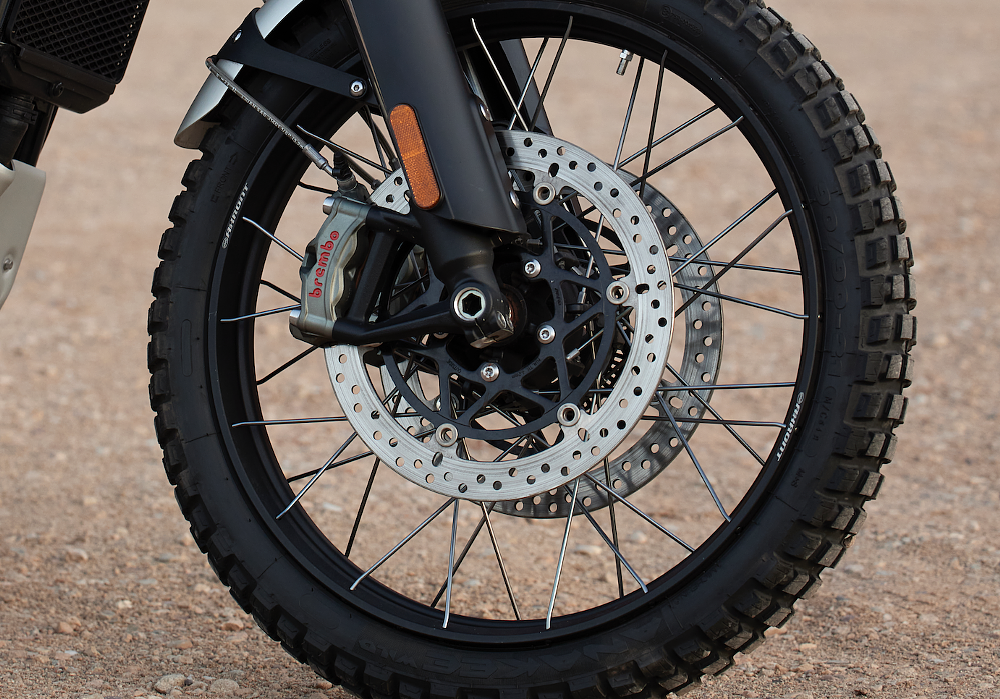
Speaking of power, it flows effortlessly from this big P-twin, accompanied by a burly exhaust and intake note. The Scrambler has the grunt of a big-inch Harley off the line and that thrust is carried all the way up to the 7,000-rpm redline. Seventy miles per hour in sixth gear has the engine loping at about 3,750 rpm, and you can be going 100 in a few seconds without downshifting. This is the Dwayne Johnson of engines, capable of benching 500 pounds on an off day yet nice enough to buy the house cleaner a new Cadillac for her birthday.
Gimme the dirt!
Then, finally, my concerns were addressed. Led by three-time 250 Supercross and motocross champion and current Triumph-outfitted tour guide Jeff Stanton, we rolled off the pavement. Our group roamed down smooth two-track, skipped across whoops, raced through slot canyons, and hill climbed the inclines of an ancient coral reef. Throughout it all the XE excelled, wheelying on command and soaking up everything I threw at it with a poise exhibited by premium ADVs. Suffice to say the XE is still a total badass.
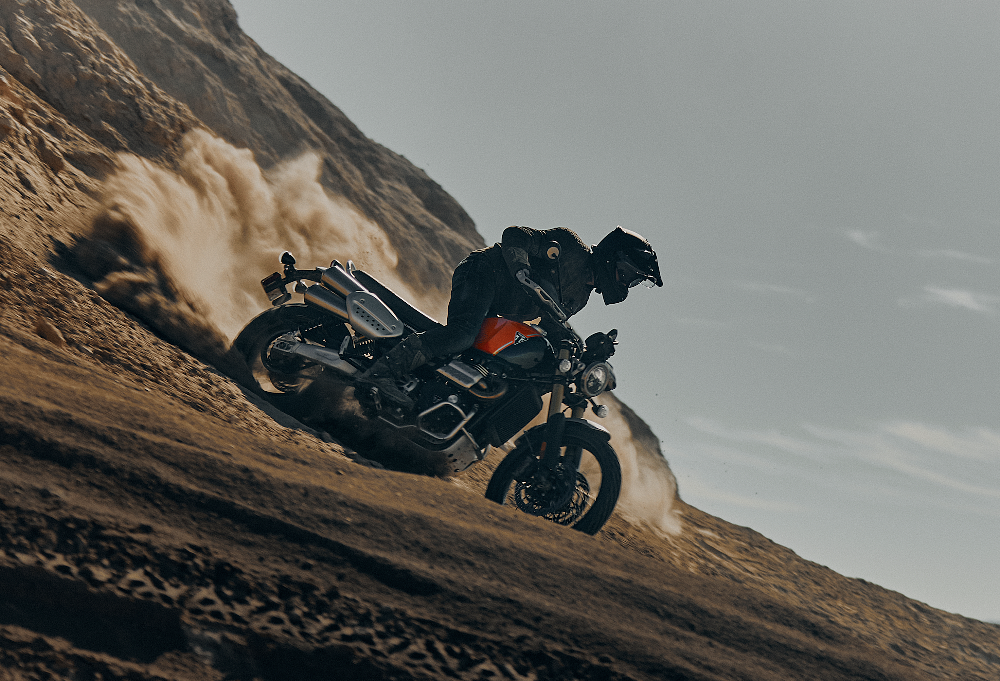
The X holds its own as well, though you can bottom either end, so you need to be more careful with line selection, and the lack of ground clearance may have you smacking your boots on trailside obstacles more often than on the XE. Honestly, the X on knobbies is likely more than enough for the vast majority of buyers, and there’s no denying that the lower seat height increases confidence and reduces tipovers, even for experienced riders.
What limits your enjoyment of the X isn’t necessarily the suspension, which you can adapt to, but the ride modes and their lack of adjustability. The XE’s Off Road Pro mode is excellent, since it retains just the slightest bit of front ABS and nothing else. Meanwhile, the X’s Off Road mode has more conservative front ABS and isn’t especially lenient with tire spin. In some particularly sandy sections or when going over fine chop the TC would kick in and slow me down, sometimes nearly to a stop. You can turn TC off entirely if you dive into the X’s menus, but your only option for disabling ABS is to pull the fuse.
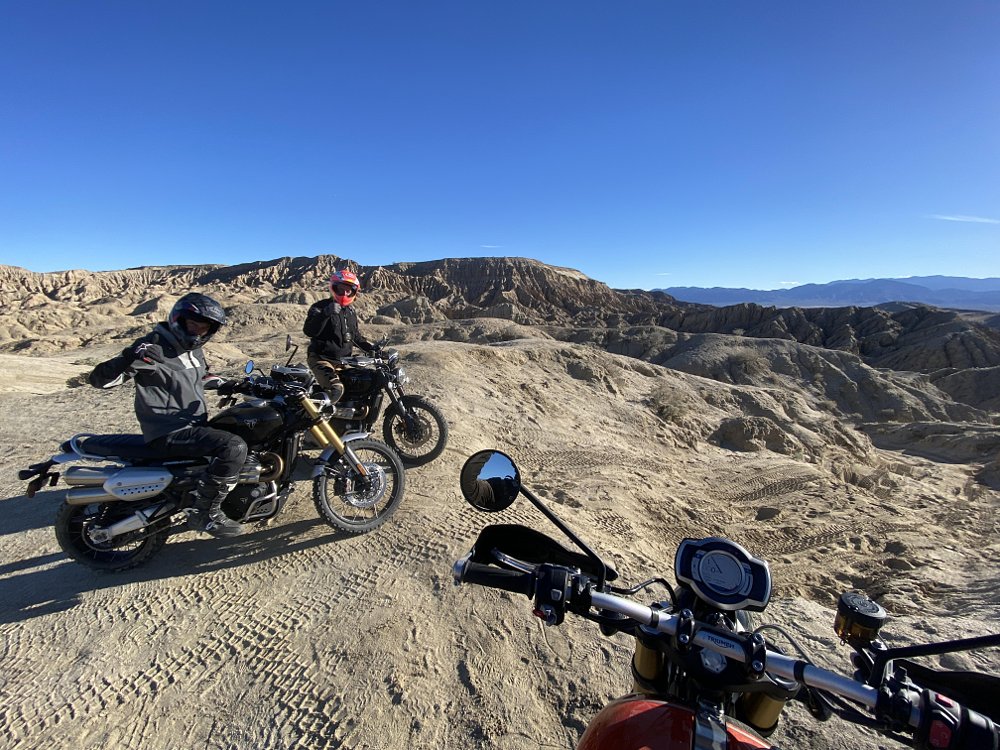
And for goodness sake, turn TC off and spin that back tire! With this wheelbase, and that diesel-engine torque, breaking rear-wheel traction and steering with the rear is one of the most delectable riding characteristics the Scrambler has to offer. The fact that it looks beautiful, and everyone, from your riding buddies to their significant others to old ladies at the Post Office will tell you so, is just icing on this double-decker of a cake.
Final thoughts
I’ve gotta say, I’m relieved. As far as the XE is concerned, it’s $900 less than before and just as good, which flies in the face of everything I know about cost and quality. Plus, it’s got cornering ABS and TC, among other new and useful features. The X’s lower spec, lower seat height, and lower price have their place, and I expect any pragmatic buyer will appreciate the value and approachability and not mind the lack of frills. I do wonder why the modes are simplified, and why they removed cruise when it's just a button now that everything is ride-by-wire, right?
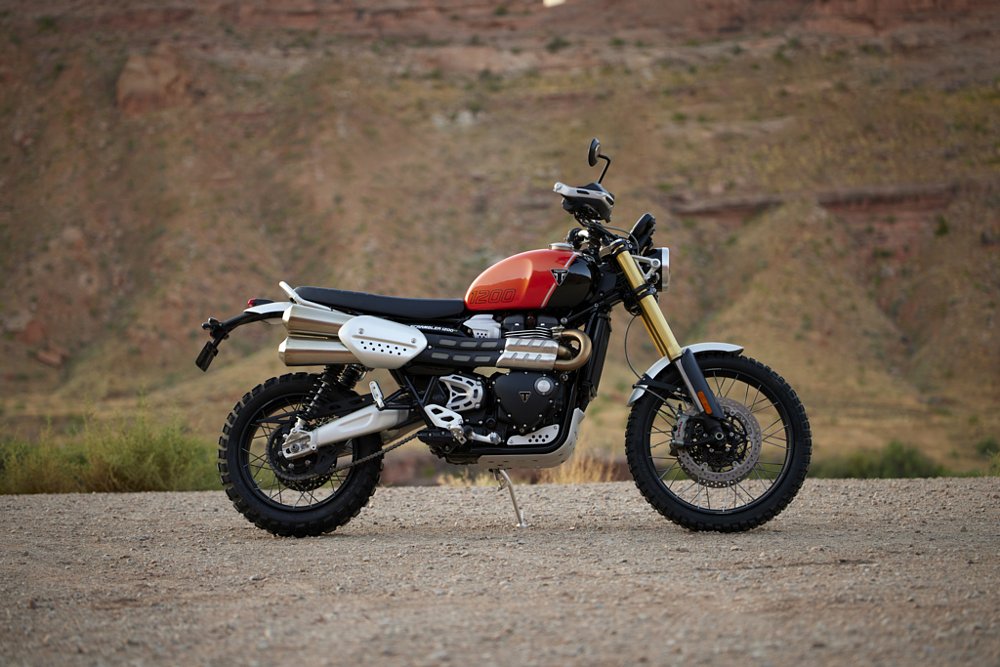
Then again, cruise control is usually for touring, and while the Scramblers are adept in urban, rural, and even off-road environments, their total lack of wind protection is going to dissuade riders from longer road trips. For that, you’ll need a big, ugly ADV.
| 2024 Triumph Scrambler 1200 X | 2024 Triumph Scrambler 1200 XE | |
|---|---|---|
| Price (MSRP) | $13,595 | $15,295 |
| Engine | 1,200 cc, liquid-cooled, eight-valve, parallel twin | |
|
Transmission, final drive |
Six-speed, chain | |
| Claimed horsepower | 89.0 @ 7,000 rpm | |
| Claimed torque | 81.1 foot-pounds @ 4,250 rpm | |
| Frame | Tubular-steel double cradle | |
| Front suspension | Marzocchi 45 mm fork; 6.7 inches of travel | Marzocchi 45 mm fork adjustable for preload, compression, and rebound damping; 9.8 inches of travel |
| Rear suspension | Marzocchi shocks adjustable for preload; 6.7 inches of travel | Marzocchi shocks adjustable for preload, compression, and rebound damping; 9.8 inches of travel |
| Front brake | Nissin two-piston calipers, 310 mm discs with ABS | Brembo Stylema four-piston calipers, 320 mm discs with ABS |
| Rear brake | Nissin two-piston caliper, 255 mm disc with ABS | |
| Rake, trail | 26.2 degrees, 4.9 inches | 26.9 degrees, 5.0 inches |
| Wheelbase | 60 inches | 61.8 inches |
| Seat height | 32.3 inches | 34.3 inches |
| Fuel capacity | 3.96 gallons | |
| Tires | Metzeler Karoo Street, 90/90-21 front, 150/70R17 rear | Metzeler Tourance, 90/90-21 front, 150/70R17 rear |
| Claimed weight | 502 pounds | 507 pounds |
| Available | February 2024 | |
| Warranty | 24 months | |
| More info | triumphmotorcycles.com | |

 Membership
Membership










